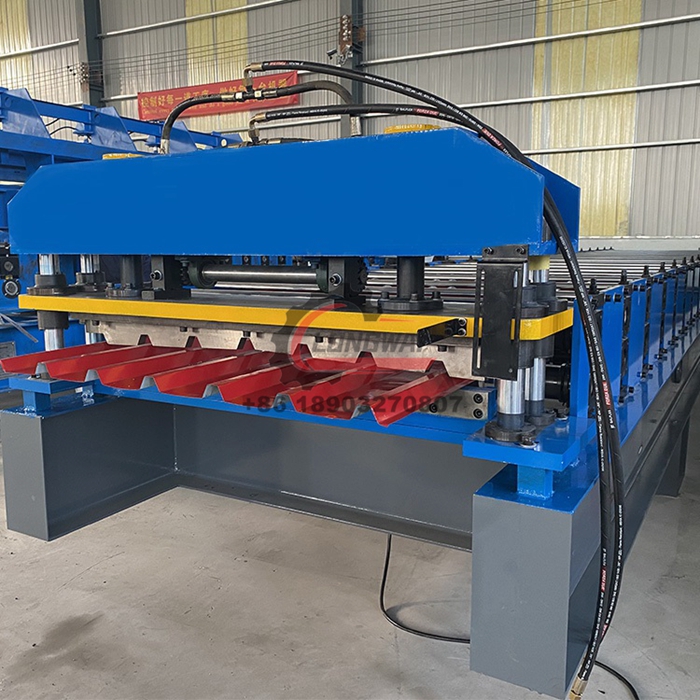Top Manufacturers of Standing Seam Metal Roof Roll Forming Machines for High-Quality Roofing Solutions
Standing Seam Metal Roof Roll Former Factories An Overview
In recent years, the roofing industry has witnessed a significant shift towards the use of standing seam metal roofs due to their durability, energy efficiency, and aesthetic appeal. As this trend continues to grow, the demand for advanced manufacturing processes has surged, leading to the establishment of numerous standing seam metal roof roll former factories around the globe. These factories play a crucial role in producing high-quality metal roofing systems that meet the evolving needs of builders, architects, and homeowners.
Understanding Standing Seam Metal Roofs
Standing seam metal roofs are characterized by their vertical seams that rise above the panel's flat surface, providing a sleek and modern appearance. These seams are typically locked together, which allows for expansion and contraction due to temperature fluctuations, thereby minimizing the risk of leaks. Additionally, metal roofs are known for their longevity, often lasting 50 years or more with proper maintenance. This longevity, along with their energy efficiency—reflecting solar rays and reducing cooling costs—makes standing seam metal roofs an attractive option for both residential and commercial applications.
The Role of Roll Former Factories
Roll forming is a continuous bending operation in which a long strip of metal is passed through a series of rollers to create specific shapes, profiles, and sizes. Standing seam metal roof roll former factories are equipped with advanced machines that can produce a variety of panel profiles and accessories with precision. These factories typically manufacture components such as metal panels, clips, and trims necessary for the complete roofing system.
One of the advantages of roll forming is its ability to create customized solutions tailored to the specific needs of clients
. Whether it’s a unique architectural design or a specific color requirement, roll former factories can accommodate these requests efficiently. Additionally, the use of high-strength materials ensures that the final products can withstand harsh weather conditions while maintaining aesthetic appeal.standing seam metal roof roll former factories

Technological Advancements
The standing seam metal roof roll former industry has embraced advanced technologies to improve production efficiency and product quality. Automation, for instance, is revolutionizing the manufacturing process, allowing factories to produce panels at a faster rate with minimal manual intervention. Automated systems ensure consistency in quality and reduce the likelihood of human error, ultimately leading to better products and satisfied clients.
Moreover, many roll former factories are adopting environmentally friendly practices. By utilizing sustainable raw materials and energy-efficient manufacturing processes, these factories are minimizing their environmental footprint. This commitment to sustainability not only appeals to eco-conscious consumers but also aligns with broader industry trends toward greener construction practices.
The Future of Standing Seam Metal Roof Roll Former Factories
Looking ahead, the future of standing seam metal roof roll former factories appears promising. As the construction industry continues to evolve, there is likely to be an increasing demand for innovative roofing solutions. With advancements in technology, factories will be able to produce even more complex designs while maintaining efficiency and sustainability.
Furthermore, the growing emphasis on green building practices will drive the demand for metal roofs, as they are often made from recycled materials and can contribute to energy savings over time. This trend is expected to accelerate the establishment of new factories and the expansion of existing ones.
In conclusion, standing seam metal roof roll former factories are integral to the modern roofing industry. With their ability to produce high-quality, customized metal roofing solutions, these factories not only meet the current demands of the construction market but also pave the way for sustainable building practices in the future. As technology and environmental awareness continue to advance, the role of these factories will become increasingly important in shaping the skylines of our cities and towns.
-
Roof Panel Machines: Buying Guide, Types, and PricingNewsJul.04, 2025
-
Purlin Machines: Types, Features, and Pricing GuideNewsJul.04, 2025
-
Metal Embossing Machines: Types, Applications, and Buying GuideNewsJul.04, 2025
-
Gutter Machines: Features, Types, and Cost BreakdownNewsJul.04, 2025
-
Cut to Length Line: Overview, Equipment, and Buying GuideNewsJul.04, 2025
-
Auto Stacker: Features, Applications, and Cost BreakdownNewsJul.04, 2025
-
Top Drywall Profile Machine Models for SaleNewsJun.05, 2025








